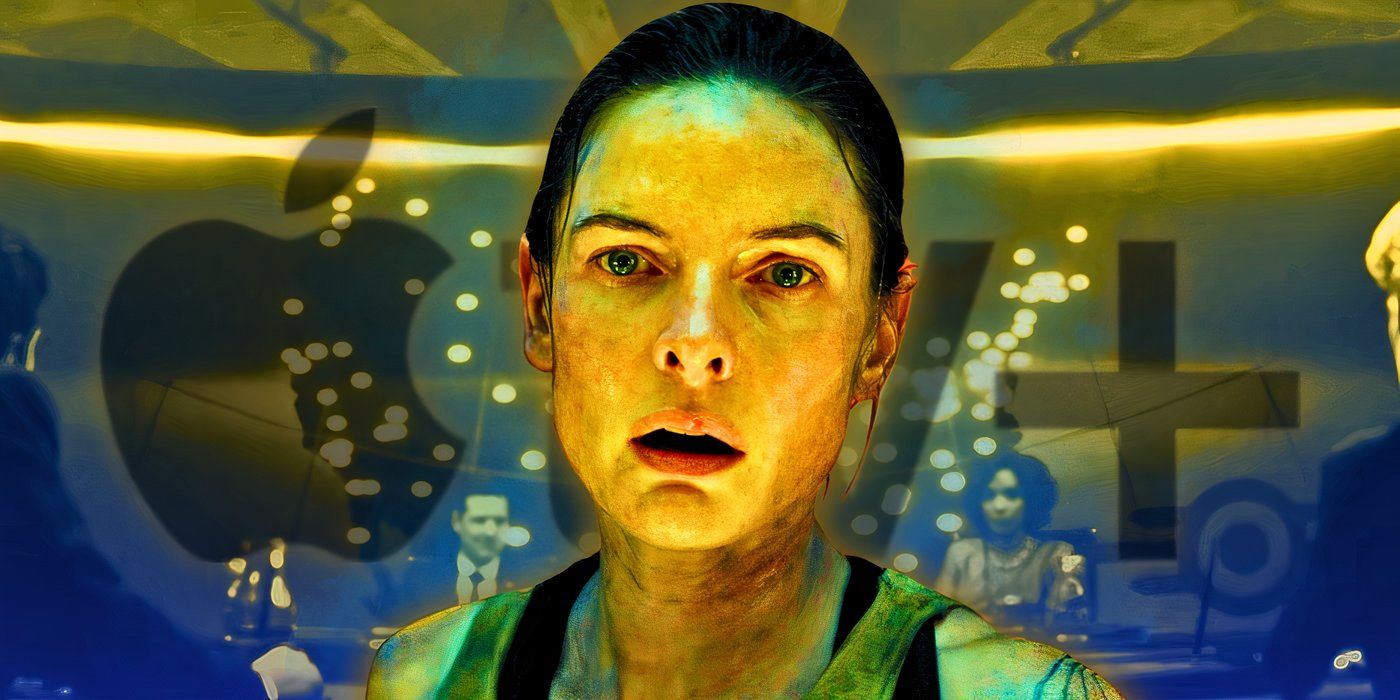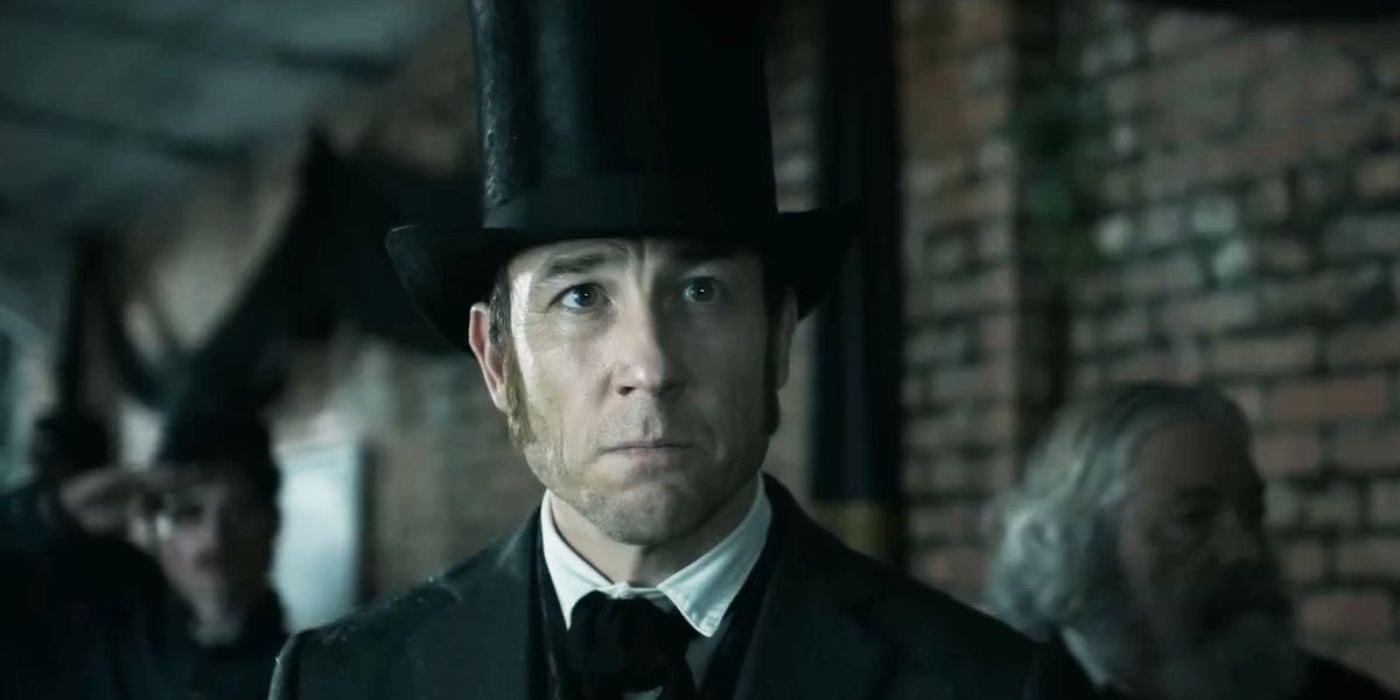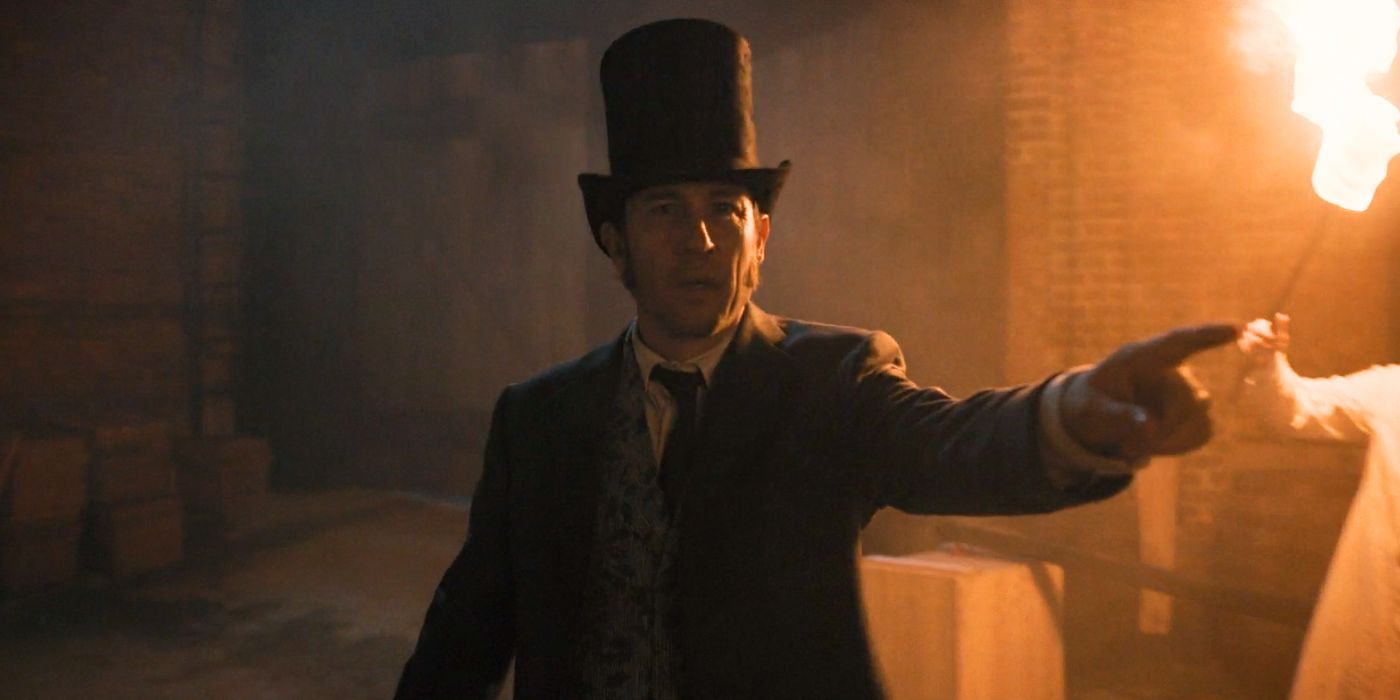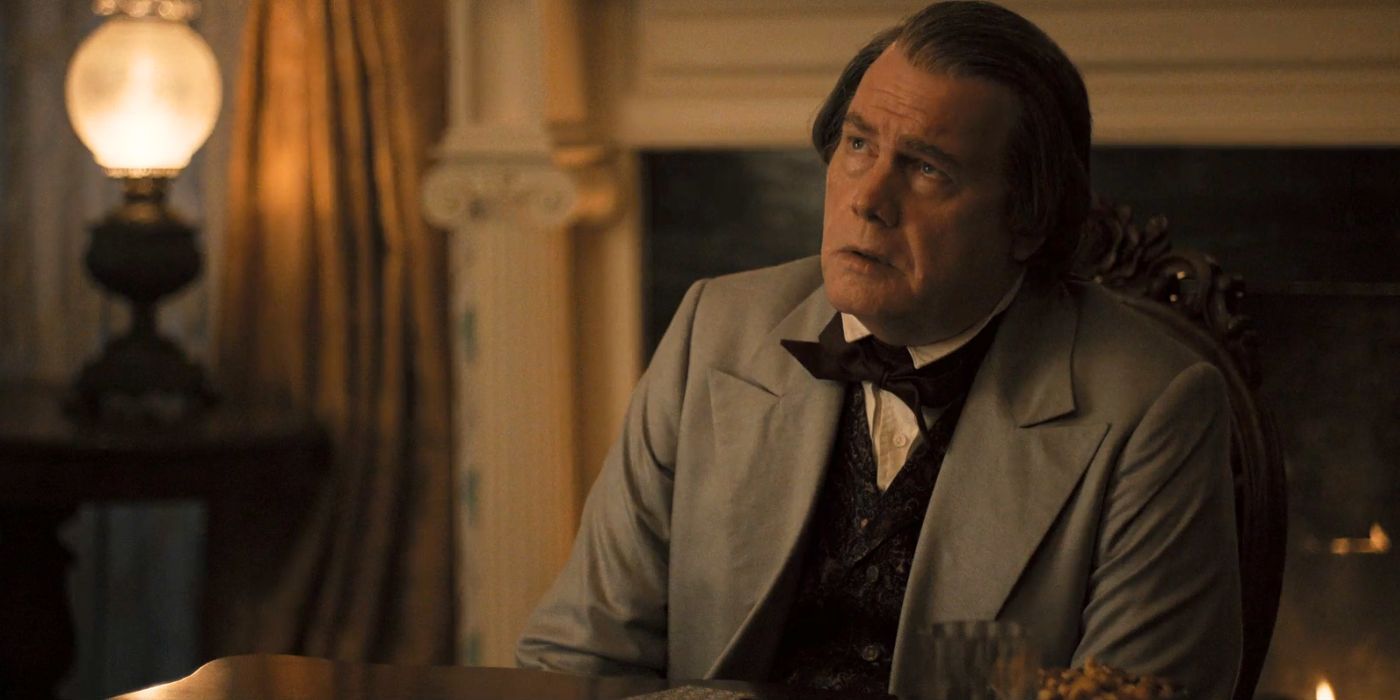In the ninth and final episode of Apple TV+'s Manhunt, Secretary of War Edwin Stanton realizes that the new president, Andrew Johnson, wants to remove him, and as a result, Stanton barricades himself in his office for three months in order to keep his job, an extraordinary feat that actually happened in real life. Following the assassination of President Abraham Lincoln by John Wilkes Booth, Lincoln's Vice President, Andrew Johnson took up the mantel as president. However, his ideals did not quite meld with those of Edwin Stanton, or Lincoln, and as a result conflicts like the barricade occurred.
Edwin Stanton's barricade is really the final straw in an episode of intense emotions and drama. The Manhunt series finale follows the trials of those involved in Abraham Lincoln's assassination, including figures like David Herold, Mary Surratt, John Surratt Jr., Dr. Samuel Mudd, Lewis Powell, and Edmund Spangler. Although Edwin Stanton intended to charge this group, along with Confederate president Jefferson Davis with grand conspiracy, this plan fell through. Regardless, the conspirators were all sentenced to death or prison time. Ultimately, Stanton's effort to get justice seemed to drive Johnson to try and remove Stanton from office.
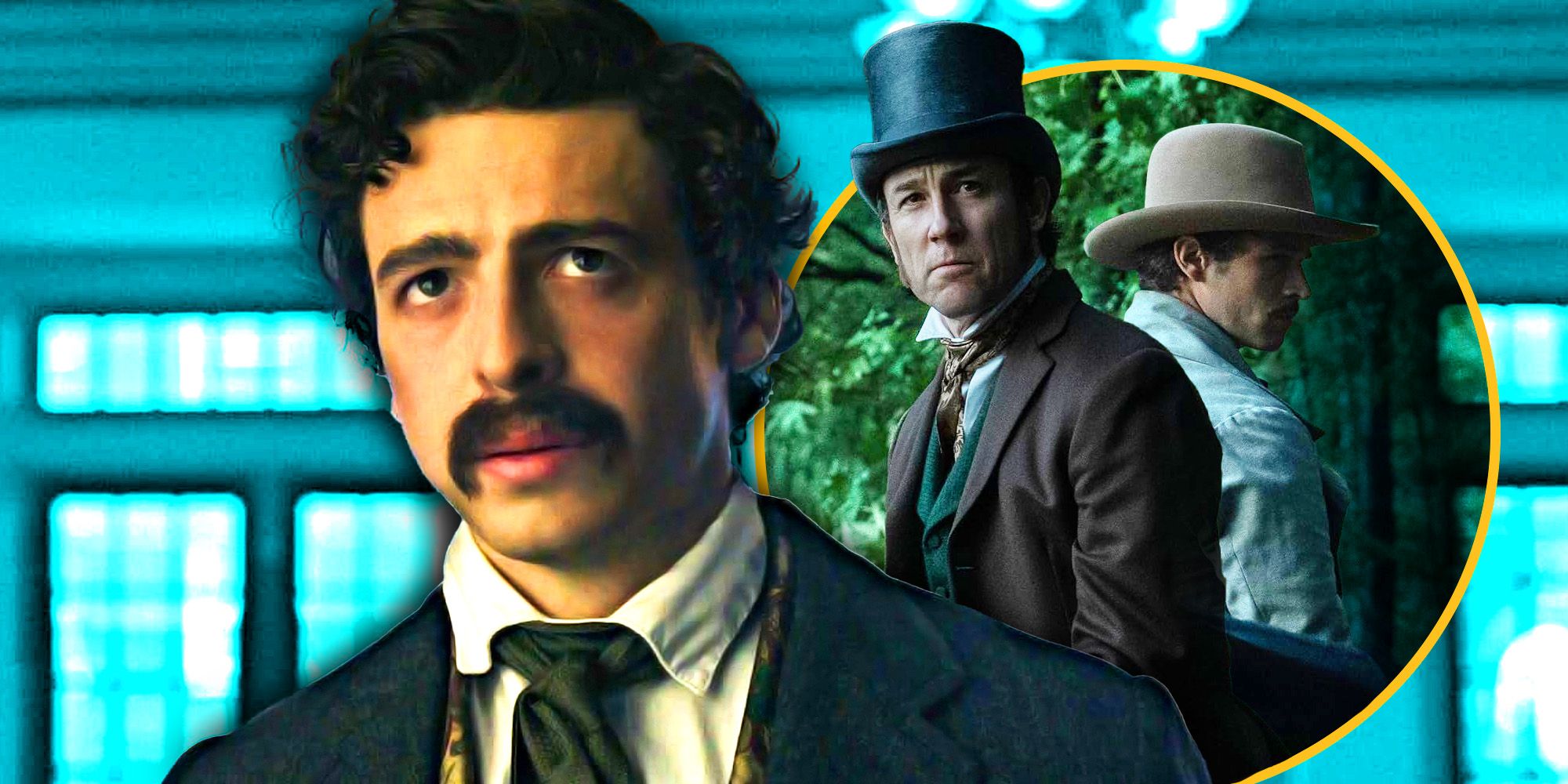
Why Booth's Conspirators Remain Quiet In Manhunt Finale's Trial Explained By Creator
EXCLUSIVE: Manhunt creator Monica Beletsky explains why John Wilkes Booth's conspirators remain quiet during their trial in the finale.
Edwin Stanton's Barricade Scene In Manhunt Happened In Real Life
Stanton avoided removal via a barricade
As portrayed in Manhunt, Secretary of War Edwin Stanton did barricade himself in his office to avoid being removed from office. In the years following Abraham Lincoln's death, Andrew Johnson and Edwin Stanton did not see eye to eye on most issues. Although Johnson agreed to follow through with Abraham Lincoln's Reconstruction plans, Johnson's Reconstruction was much different, as he acquitted Confederate rebels of their crimes and attempted to stop legislature that would give freed slaves rights. Ultimately, Stanton and others in the U.S. government disagreed with Johnson's actions and did everything they could to go against his orders.
This is essentially what caused Stanton's barricade.
After consistently going against his wishes, Stanton became a target in the eyes of Andrew Johnson.
In 1868, Johnson removed Stanton from office, despite the Tenure of Office act protectin Stanton's position. The Senate swiftly voted Stanton back in. Later that year, when Johnson tried to remove Stanton again, greater action was taken. A motion was presented to impeach Andrew Johnson, and in order to keep his position and keep the issue alive, Edwin Stanton remained in his office throughout the duration of the trail. Johnson was ultimately acquitted.
Andrew Johnson was the first U.S. president to ever be impeached.
How Long Did Edwin Stanton Barricade Himself?
Stanton remained in his office from February to May
Throughout Andrew Johnson's impeachment trial, Secretary of War Edwin Stanton remained in his office. He only left occasionally, and secretly, to spend a bit of time at home. Otherwise, he slept, ate, and conducted business in the Secretary of War office. And in order to prevent others from removing him by force, such as his replacement Lorenzo Thomas, Stanton put up barricades in the halls of the War department. His peers continued to take orders from him, and business went on as usual, despite the strange circumstances. This lasted from February to May, for a total of three months.
This aligns with what Manhunt portrayed at the end of the final episode. After hearing Johnson's intentions to remove him, Stanton pushes furniture in front of his door and begins his barricade then and there. However, there are several distinctions between real life and Manhunt. Primarily, Johnson's reasons for removing Stanton were much more built up than Manhunt makes it seem.
In the series, it seems as though the conspiracy trial is the reason for Stanton's removal, but in reality, there was much more going on beyond that. Furthermore, Stanton was actually removed earlier in the year before the barricade.
How Edwin Stanton's Barricade Led To The First Presidential Impeachment
Stanton's attempted removal broke federal laws
Edwin Stanton's barricade and Andrew Johnson's impeachment are events that go hand in hand. To be clear, there were two times in which Johnson tried to fire Stanton. First, in 1867, Johnson told Stanton that he wanted him gone, and Stanton complied, despite the fact that his removal broke the Tenure of Office act. As a result, Senate voted to bring Stanton back. With this in mind, when Johnson tried to remove Stanton a second time the following year, the government was not going to let it slide. Johnson was impeached due to his breaking of federal laws.
Edwin Stanton's barricade was a result of Johnson's attempt to remove him, and also of his impeachment. During his trial, Johnson could continue trying to remove Stanton, so Stanton decided to remain in his office to make a point and protect his job. By creating a barricade, Stanton was communicating that he would not be removed, even if it meant going to extremes. Ultimately, these two historical moments are completely interconnected, and are an example of the chaos that unfolded during the Reconstruction period after Abraham Lincoln's death as portrayed in Manhunt.



